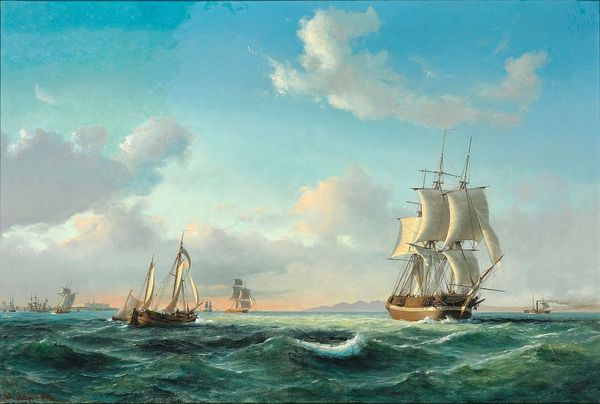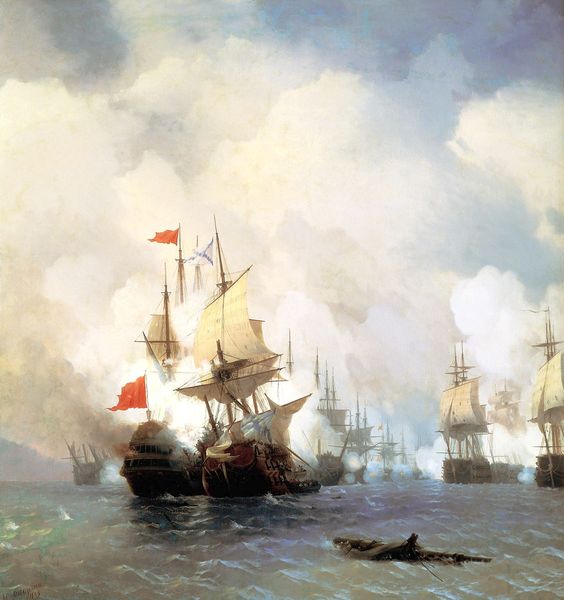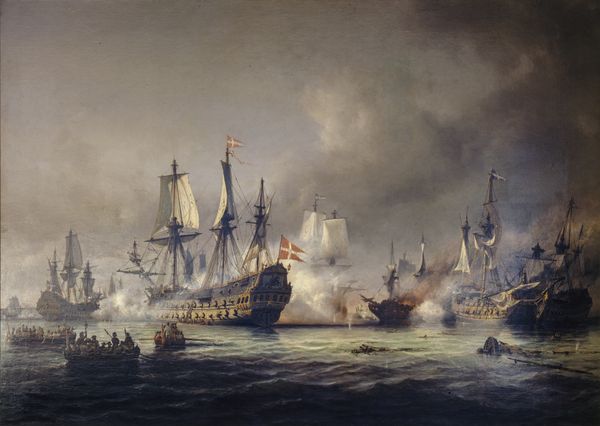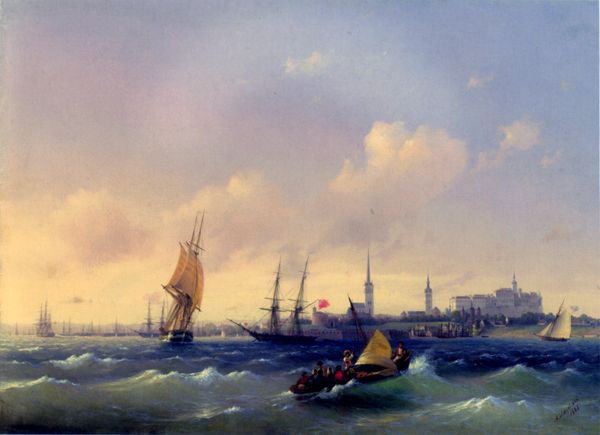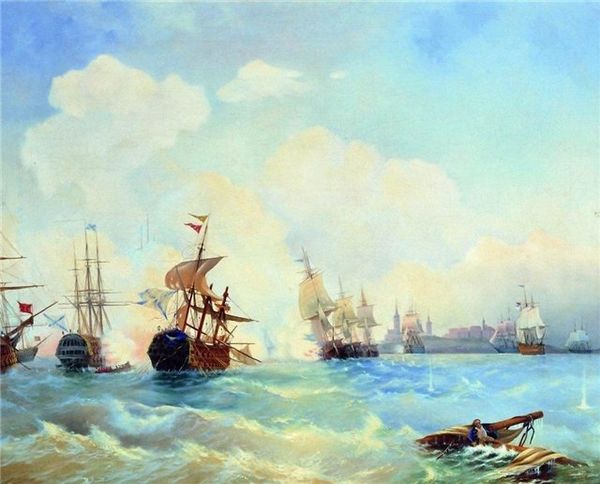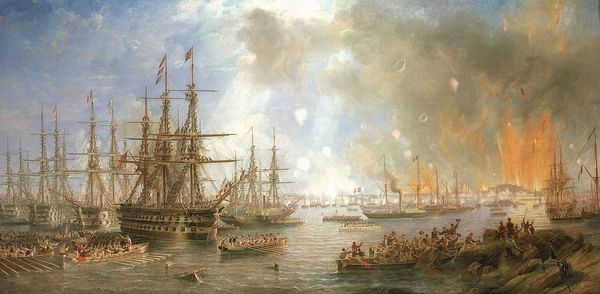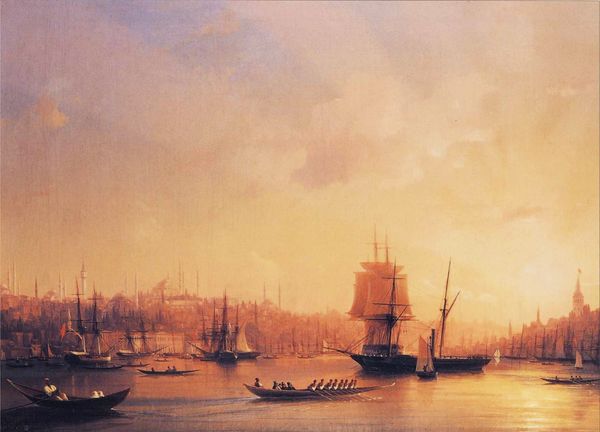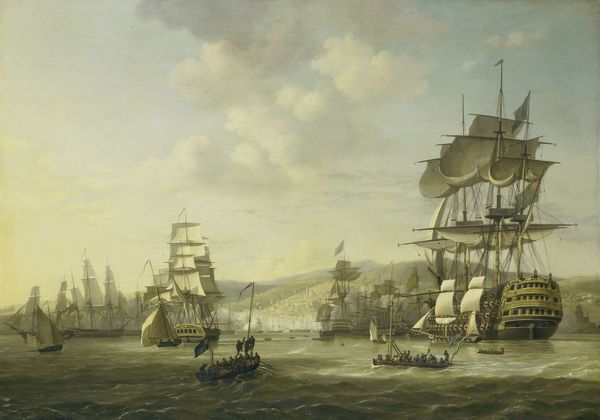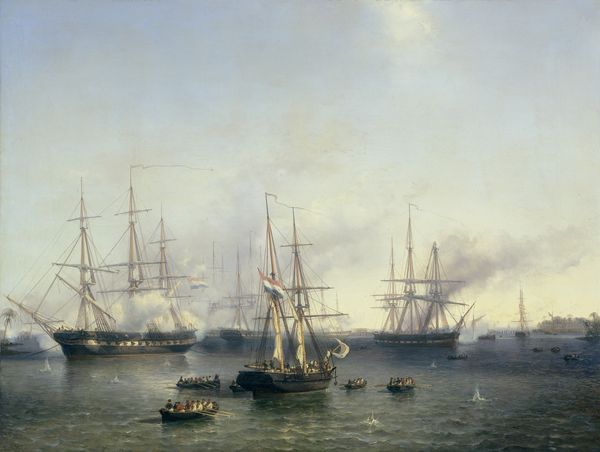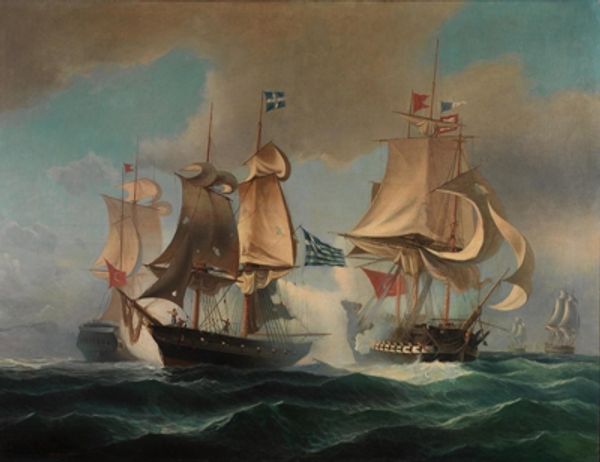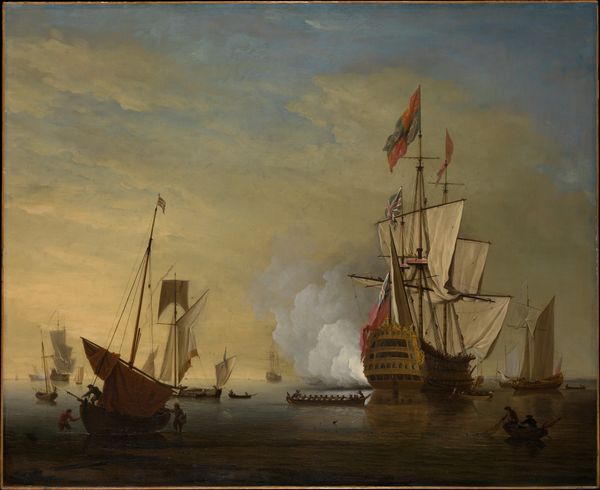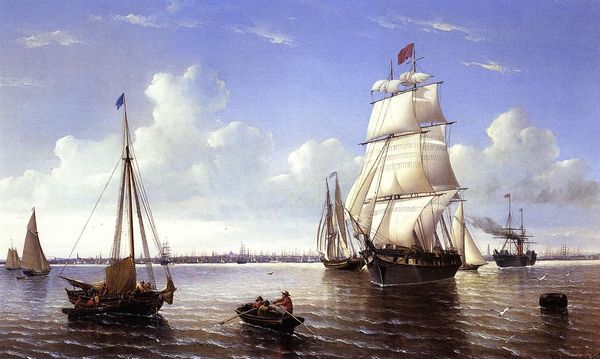
Copyright: Public domain
Editor: Here we have Alexey Bogolyubov's "The Battle of Athos," painted in 1853 using oil on canvas. It depicts a naval battle, and the sheer number of ships creates a sense of overwhelming chaos. How would you interpret this piece from a formalist perspective? Curator: The dynamism achieved through the contrasting diagonal lines formed by the ships' masts and the horizon is quite striking. Observe how the artist uses light and shadow to create depth, particularly in the billowing smoke that partially obscures the ships. The chromatic scale, dominated by blues and yellows, builds a sense of tension when paired with the rigid geometry of the vessels. Editor: The use of color and light is something I did not notice immediately. Does the composition reveal anything about the artist's attitude toward war? Curator: Indeed. There is a calculated ambiguity within the form; while ostensibly depicting a battle, there is little visual indication of damage or casualties. Consider the brushstrokes. They're broad and sweeping, capturing the energy of the scene. But this application seems intent on romanticizing rather than conveying the brutality of naval conflict. Notice, also, the painterly construction of the sky; the sublime beauty subverts expectations. Editor: So the formal elements suggest that Bogolyubov may not be aiming for realistic representation of war? Curator: Precisely. The painting’s value doesn’t rest upon it serving as historical record, but rather on how the structural properties interplay. Bogolyubov prioritized achieving compositional and atmospheric balance over illustrating actual violence. How else would one make sense of a clean-cut battle, other than as an aesthetic construction? Editor: That is quite enlightening. I never thought to consider historical paintings this way, thinking of them instead as documents. Curator: Indeed. Through examining its forms we begin to unlock layers previously hidden. The material application becomes as important as the depicted subject. Editor: It sounds like approaching art from a Formalist angle can broaden perspectives, changing the understanding of even what appears to be straightforward. Thanks!
Comments
No comments
Be the first to comment and join the conversation on the ultimate creative platform.

